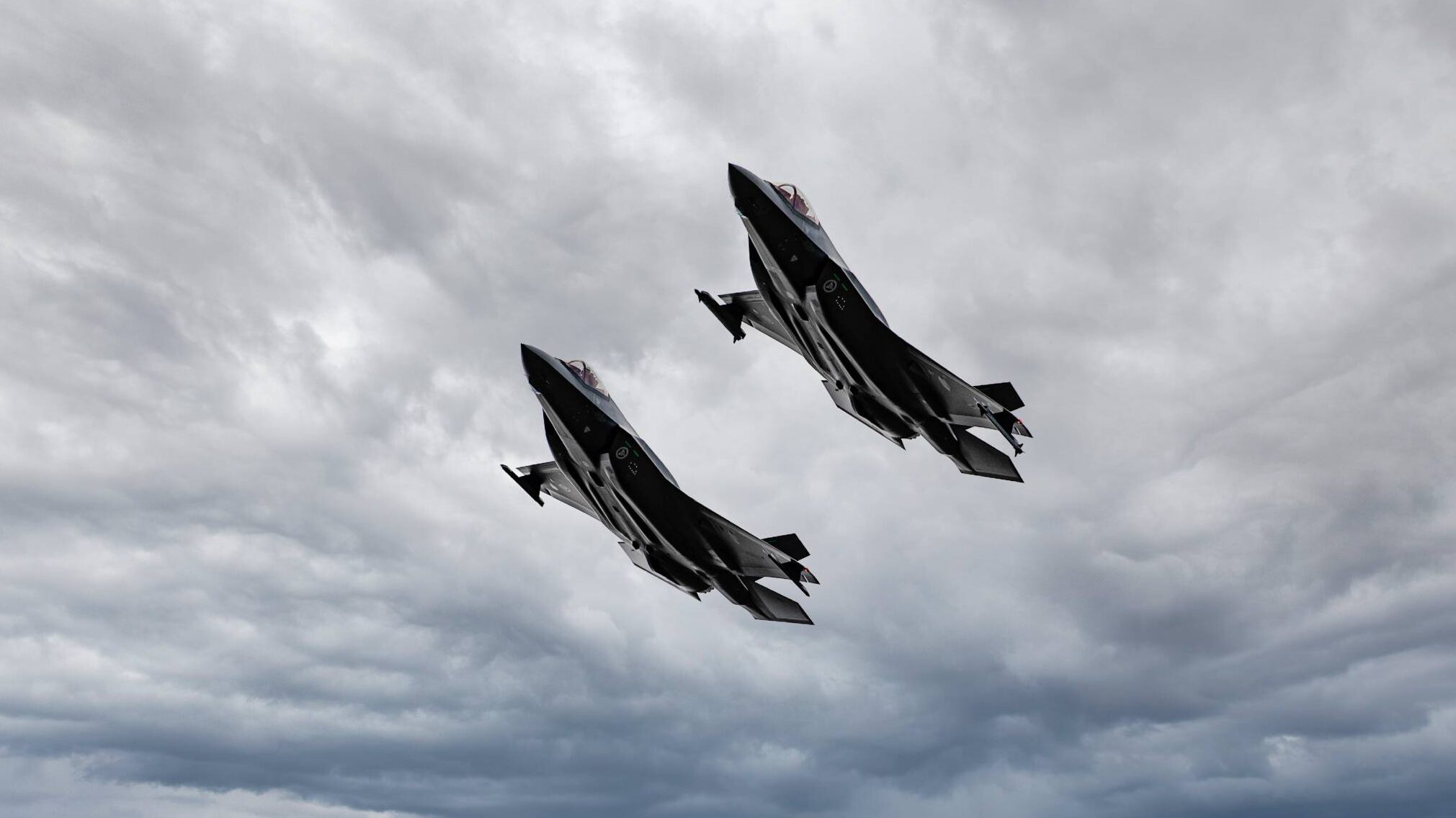
Norway’s F-35s flew in the Arctic Challenge Exercise for the first time in 2021. (Norwegian Armed Forces/Matias Charman)
WASHINGTON: Norway’s top air force officer wants NATO to consider greenlighting a new “Nordic air operations center” to control air missions in the region, should Sweden and Finland ultimately be approved as new members of the transatlantic alliance.
Maj. Gen. Rolf Folland, chief of the Royal Norwegian Air Force, told Breaking Defense that he has already begun thinking about opportunities for better integration with Sweden and Finland’s air forces, with the air operations center the one he plans to “explore with my foreign colleagues the most.”
Adding Sweden and Finland air force’s to NATO more than doubles the number of fourth- and fifth-generation fighters currently planned to be fielded by the Nordic members of NATO. Last year, Finland announced plans to buy 64 F-35s to replace its aging Hornet fleet, and Sweden is in the process of a buying at least 60 Gripen E/Fs.
Meanwhile, of the Nordic countries currently with NATO membership, Norway plans to field a fighter force of 52 F-35s by 2025, and Denmark is replacing its F-16s with 27 F-35s. (Iceland, which does not have an air force, receives air policing support from NATO members.)
“If we can plan to use this force in a holistic, joint, combined manner” under Headquarters Allied Air Command based at Ramstein Air Base in Germany “I think this would be a benefit for us, and it can be a benefit for NATO,” Folland said.
RELATED: Russia isn’t ‘ten feet tall,’ but don’t discount it, Norwegian air chief says
While Folland didn’t go into details on how a Nordic air operations center would fit into NATO’s existing command and control structure, NATO’s Headquarters Allied Air Command at Ramstein already oversees a number of subordinate units elsewhere in Europe. That list currently includes the two Combined Air Operations Centres at Uedem, Germany and Torrejón, Spain, as well as the Deployable Air Command and Control Centre at Poggio Renatico, Italy.
On July 5, ambassadors for the current NATO countries signed off on “accession protocols” indicating their support of Sweden and Finland’s membership in the alliance. Those protocols must now be ratified by every member’s legislature for the process to move forward. As of July 7, eight of the 30 NATO nations — Canada, Norway, Denmark, Iceland, Estonia, UK, Albania, Poland — had already approved the new members:
If Sweden and Finland are permitted to join NATO, alliance members will control the entire Scandinavian Peninsula — a unique landmass is connected to the rest of Europe by Russia, with the thinly populated countries of Norway, Sweden and Finland stretching north to south.
Currently, Norway, Sweden and Finland’s air forces all exercise together regularly through events such as the biennial Arctic Challenge, as well as share cross-border training agreements that allow the nations to bypass the need for lengthy diplomatic clearances for training events, Folland said.
“The only problem is that we could not integrate fully,” he said. “We could not plan together because we knew we didn’t have any guarantee that we actually would fight together. They could stay neutral [in a conflict involving the alliance].”
NATO membership for Finland and Sweden could erase those barriers, allowing the three nations’ air forces to share radar and sensor data gathered by military planes that cannot currently be exchanged among the countries, he said. Another big opportunity is the ability to conduct battle planning together.
“We might find out that we need to have different roles — Finland being close to the Russian [border], [and] we’d be fronting the Atlantic sea lines of obligations,” he said.
Folland’s comments echo those of Gen. Eirik Kristoffersen, Norway’s chief of defense, who told Breaking Defense in May that Norway should consider alternate ways of basing its forces once Finland and Sweden are approved to join NATO.
Historically, Norway has built its bases to accommodate NATO forces that would flow to the nation’s military installations in case of a war. However, if Sweden and Finland are integrated in NATO, the alliance will be able to conduct military planning for the defense of that region differently, Kristoffersen said.
“During the Cold War, we built up all these reception area staging, areas for allies,” he said. “Now you can include Finland and Sweden, which gives us even more terrain, more places and more airfields and more harbors.”
Folland agreed, saying that a NATO-allied Sweden and Finland could offer additional installations to which NATO can distribute forces during a crisis and could provide additional opportunity for staging critical maintenance and repair supplies so that aircraft can be fixed quickly during combat.
“With the long range precision missiles and missile technology that Russia is developing, it’s kind of naïve to think that [relying on Norway’s airbases] will be enough,” he said.






















